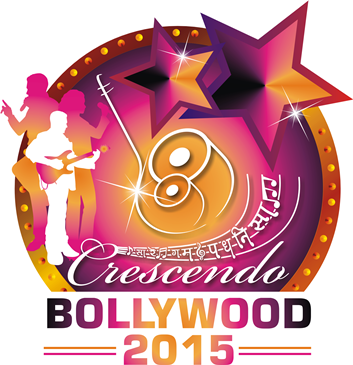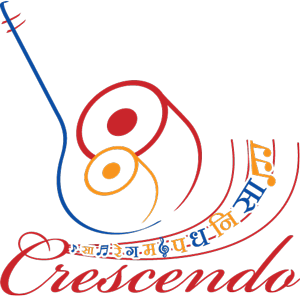Music Education - by Chaitanya Kunte
India has a rich tradition of music from Vedic age. Peeping into history, we got to know that there was Guru-Shishya tradition or Gurukul system for music education in India for a long time. We know that there are broadly 4 eras of Indian Music history - Vedic period, Puranic period, Natyashastra period, medieval period and modern period. In all these eras, we find that Gurukul system is consistently followed. But there were some obvious changes in this system according to time.
Now, we find 5 major methods of music education -
A. Gurukul system
B. Vidyalay (music school) system
C. Music teaching in regular school
D. One to One coaching of music
E. Informal training of music from various modern media.
These five methods are prevalent in India for music education, with advantages and lacunas of their own. One cannot make a value judgment of them as every method has limitations but there results are not well-documented.
Gurukul system is also known as 'Ashram' (hermitage) system. In the ancient times, the teachers or masters were Sages and a student had to live in the hermitage for twelve years and get the knowledge by serving the master. The hermitages were given patronage by the Kings and wealthy persons in the society. The life in the hermitage was rigorous, pensive and full of knowledge through direct experience. All students, they may be a prince or common man, had same treatment; there was no discrimination. Music is a performing art and is related to sound. Learning of music depends on the power or capacity of listening, so it is also called as 'art of audio-interpretation'. In Gurukul system, the student was taught on specific days, for specific period and then only, he was announced as a well versed person in that art. But this system was not too rigid; on the contrary it was flexible. The master use to train the student considering his capacity and deficiency. Every student use to get personal attention of the Guru and his grooming was taken care under his careful supervision. Student had to go through various tests during the twelve years of training for assessment. By order, Guru was considered to be highest authority and given importance like a 'verse of Veda'. The students had to perform daily rituals and were kept aside from the pleasure of thing and leisures of life for attaining the mastery over there art. Music was taught practically with experimentation and so, in the ancient times, the music was not taught through writing or notations; but it was transferred to disciple by master only through oral tradition.
The Gurukul system was prevalent in the Vedic, Puranic and NatyaShastra period, nearly 5 thousand years. But it got a major setback during the medieval period by the Muslim invasions. In this era, the education and religion were interlinked, so the Gurukul system was considered to be a Hindu method and Muslim rulers started destroying it. Under Muslim rulers, music was more a part of entertainment that a serious subject of study. This led to degradation of music and social status of musicians. The British rulers were neutral about Indian music, so they did not try to suppress the music tradition. On the contrary, there were some British officers who were interested in Indian music and they started investigating and research in Indian music.
Vidyalay system: Due to British influence, the freedom of thought and expression came to Indian education. The new education method was introduced by British in India. This also led to change in Music education. The new music education methods pioneered by Pandit Vishnu Digambar Paluskar and Pandit Bhatkhande had this background of western thought. According to new era, Bhatkhande and Paluskar felt an urgent need for a logical, regularized and formulated method of music education, that would contribute to spread of music in higher social stratum and it would benefit the betterment of musicians. For this, Paluskar started Gandharva Vidyalay in 1901 at Lahore. By this, Paluskar started an exam oriented school teaching method for music which gave music lessons step by step to the students. This education method was thorough and strict, but was open for people from all social strata. This made music education based on modern methods, along with traditional norms. Due to Vidyalay system, music education and its spread was geared up. In the Gurukul method, the main aim was to shape up a performer. On the contrary, in Vidyalay system, making 'Kaansen' (connoisseur) rather than 'Taansen' (performer) was a main focus. With connoisseur, Vidyalay also aimed at making music teachers, music researchers, writers on music, music critics and music organizers. So, the objective behind the foundation of Vidyalay system was wider than the Gurukul system. This ultimately catered the multiplicity of needs in modern era society. Vidyalay system also made a vital impact on 'Gharaneshahi' or hegemony of traditional Gharana Ustads and music was open to the liberal society and its presentation also became more of public appeal. This was, in a way, 'democratization' of music!
Following the modern school setup, Sangeet Vidyalay-s also had teaching and non-teaching staff with specific work hours. Teachers and students were bound to follow syllabus, go through tutorials, examinations, submissions, projects, etc. The students completing the course work would be given certificates of degree. So, this was a totally new system of music education in India on the background of Gurukul system.
In the Vidyalay system, one can also give incentive for performers overall growth with intensive workshops on specific skill set, participation in music competitions, giving opportunity of performances within the school, analyze and improve so. The study of musicology can be initiated and promoted by keeping a good audio-video library or archives, organizing discussion sessions, seminars and workshops.
One to One coaching of music: This is flexible, informal and open method of music education, widely spread in India considering the requirements of new age and inevitability of the time. With combining the Gurukul and Vidyalay systems, this method gives benefits from both and so, it is a middle way. In this method, the relation between Guru and Shishya is more informal and easy than Vidyalay. The charges of tuition are given in the form of monthly fees. The teacher teaches the student considering ones musical quotient or potentialities, liking, and availability of time, also. But this method lacks the intimate acquaintance to Guru, depth of lessons and commitment from the side of student as well as teacher. There are a large amount of people in society who have no ambition of being performers or musicologists but just for self-satisfaction or as a hobby they wish to learn music and this method caters the need of this section of society.
Informal training of music from various modern media: In this modern age, there are a lot of educated persons who are curious or inquisitive about music and they want to satisfy their intellectual need about knowing the music or any art. For this section, the informal training method works better. On radio and television, there are many serials introducing music. There are many books, interactive CDs, web-sites, blogs, e-portals giving information on music by which one can get the basic information. Obviously, media cannot make a musician or researcher, which needs an extensive and in-depth training, but media at least provides basic information on music by which commoners can enjoy it in a better way and further be instigative for learning music.
These methods of music education are prevalent not only in India, but all over the world. No method of music education is completely ideal, but each is complementary to each other about the aim of spread of music.



